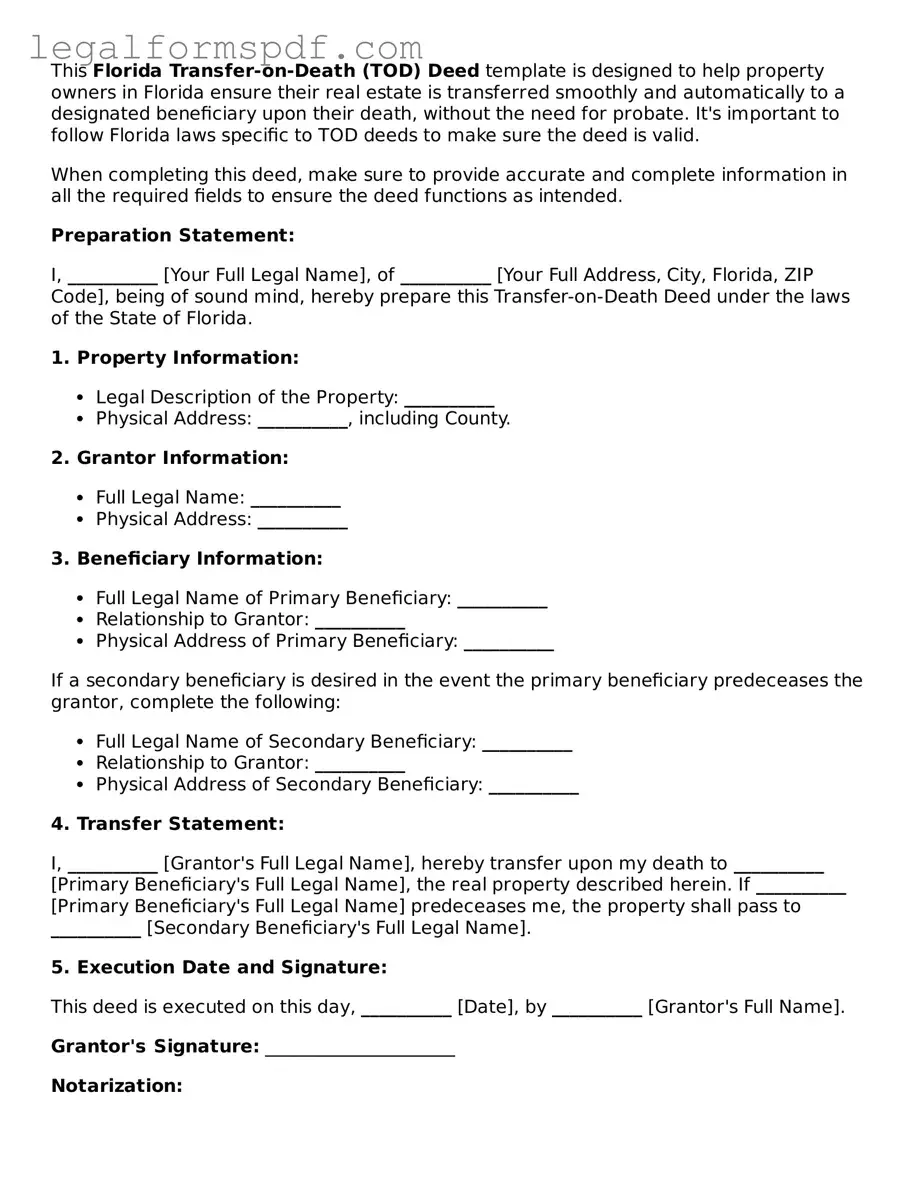This Florida Transfer-on-Death (TOD) Deed template is designed to help property owners in Florida ensure their real estate is transferred smoothly and automatically to a designated beneficiary upon their death, without the need for probate. It's important to follow Florida laws specific to TOD deeds to make sure the deed is valid.
When completing this deed, make sure to provide accurate and complete information in all the required fields to ensure the deed functions as intended.
Preparation Statement:
I, __________ [Your Full Legal Name], of __________ [Your Full Address, City, Florida, ZIP Code], being of sound mind, hereby prepare this Transfer-on-Death Deed under the laws of the State of Florida.
1. Property Information:
- Legal Description of the Property: __________
- Physical Address: __________, including County.
2. Grantor Information:
- Full Legal Name: __________
- Physical Address: __________
3. Beneficiary Information:
- Full Legal Name of Primary Beneficiary: __________
- Relationship to Grantor: __________
- Physical Address of Primary Beneficiary: __________
If a secondary beneficiary is desired in the event the primary beneficiary predeceases the grantor, complete the following:
- Full Legal Name of Secondary Beneficiary: __________
- Relationship to Grantor: __________
- Physical Address of Secondary Beneficiary: __________
4. Transfer Statement:
I, __________ [Grantor's Full Legal Name], hereby transfer upon my death to __________ [Primary Beneficiary's Full Legal Name], the real property described herein. If __________ [Primary Beneficiary's Full Legal Name] predeceases me, the property shall pass to __________ [Secondary Beneficiary's Full Legal Name].
5. Execution Date and Signature:
This deed is executed on this day, __________ [Date], by __________ [Grantor's Full Name].
Grantor's Signature: _____________________
Notarization:
This document was acknowledged before me on __________ [Date], by __________ [Grantor's Full Name], who is personally known to me or has produced __________ [Type of Identification] as identification.
Notary Public's Signature: _____________________
Printed Name: __________
Commission Number: __________
My Commission Expires: __________
